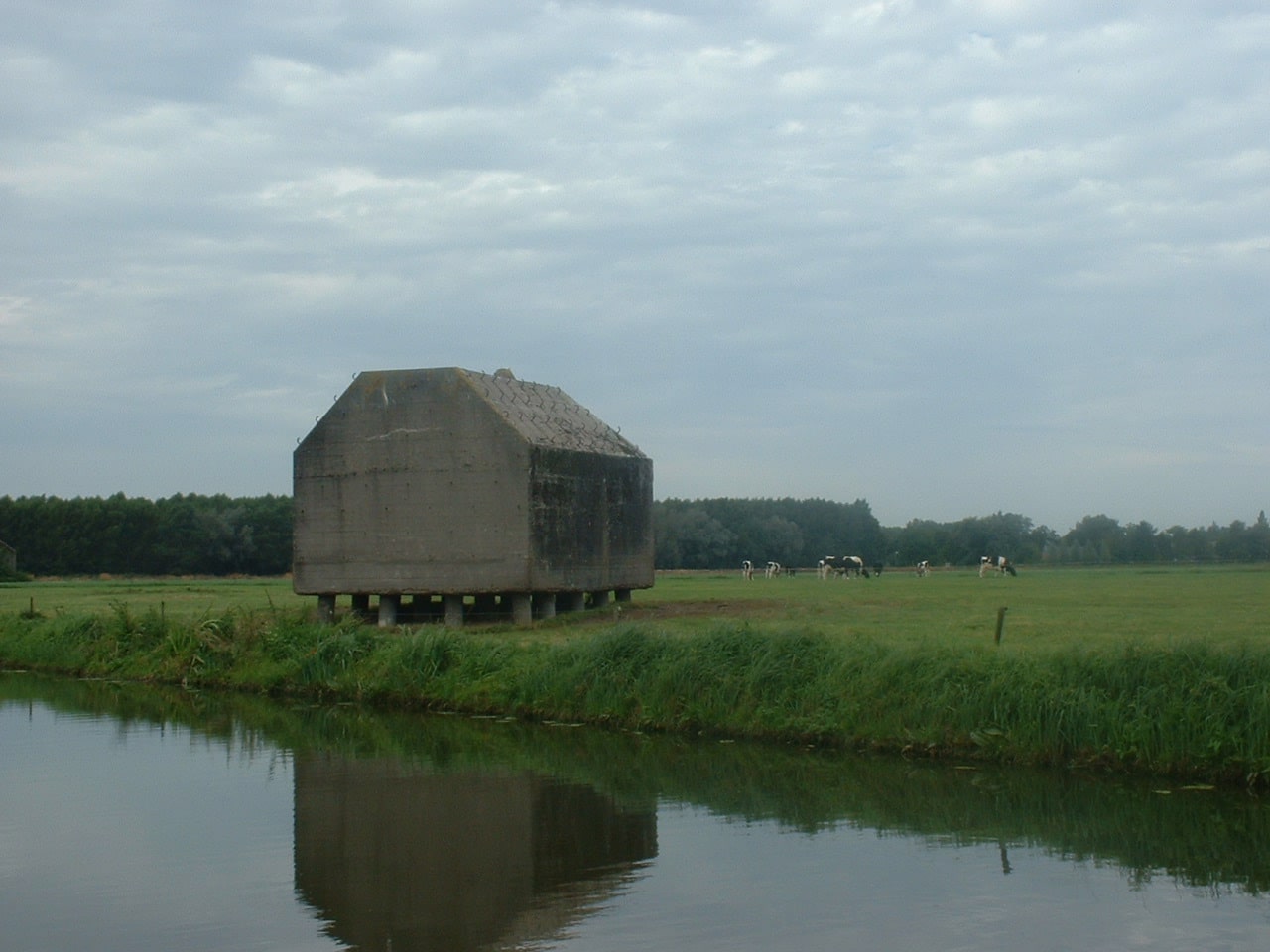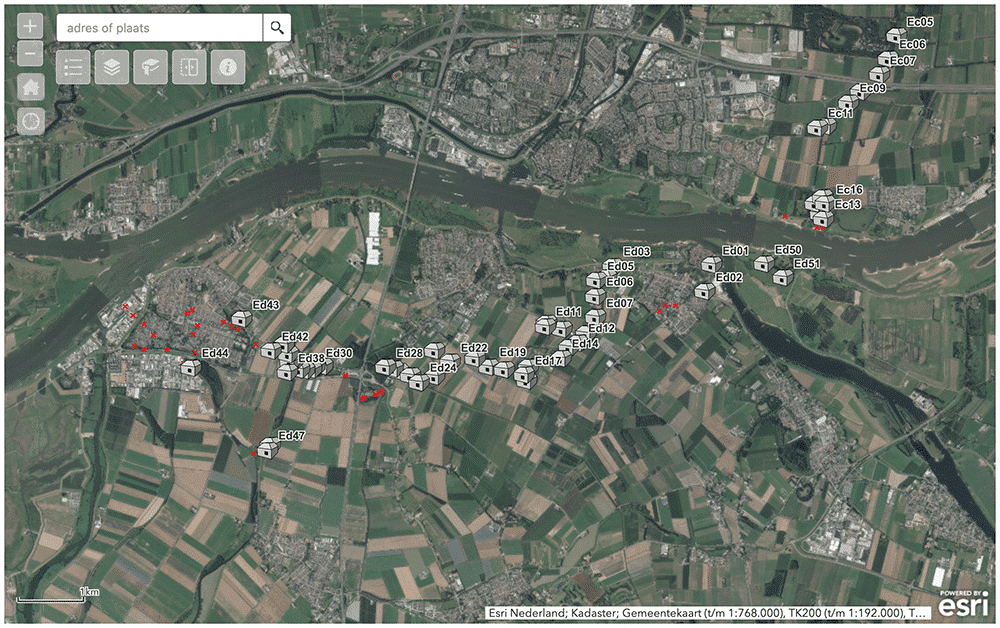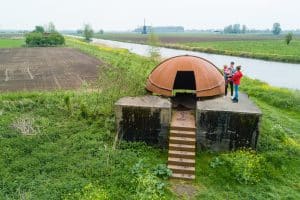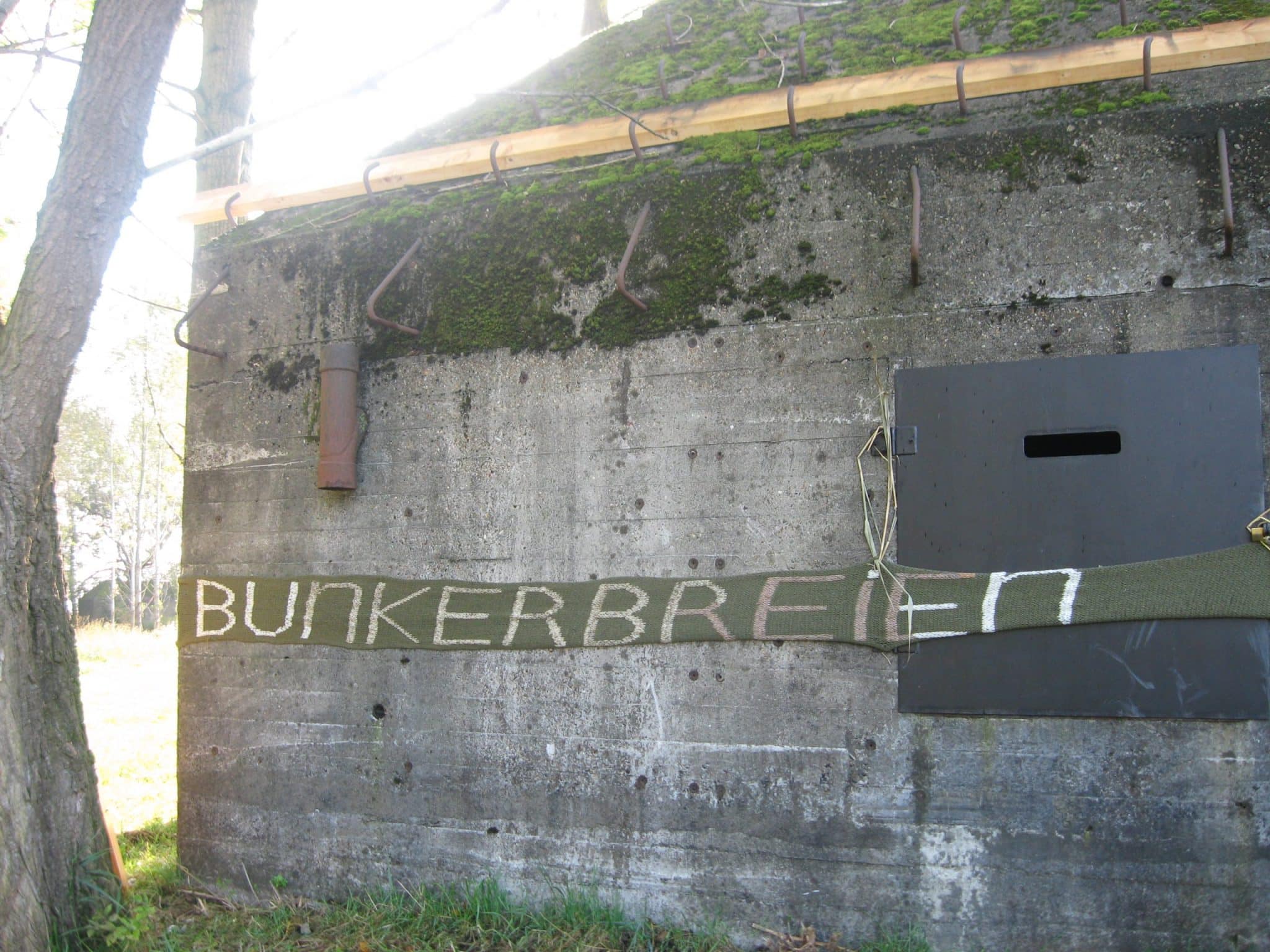From stand-in-the-road to bat house
Of the total 700 Type P's along the entire waterline, about 550 have survived, several dozen of which are in the Biesbosch Line. If you look around carefully on your wanderings through Altena, that large number is quite extraordinary. You will see that the shelters are sometimes terribly in the way. Nor are they a calling card for "Dutch Design"; they can rightly be called concrete blocks.
One of the reasons so many of the group shelters are still standing is that they were supposed to provide protection from mortars and shells. That would certainly have succeeded had it ever come to that. When attempts were made to demolish them after the war, it proved no easy task. It took many kilos of explosives to collapse the thick walls. Fortunately, because in this way a piece of Dutch history remained intact.
So if you can't beat them, join them, became the motto. Many of the shelters have found alternative uses: from sheep sheds to hibernation sites for bats.
By now, most of the shelters are protected. This is true at least of those between Fort Altena and Woudrichem. They belong to the forts, which are national monuments.




